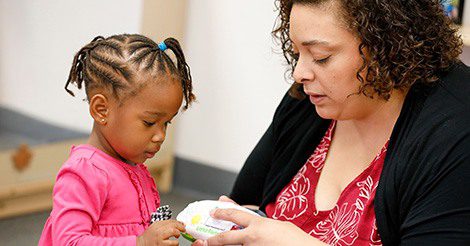Can You Help Me?
Children encounter problems throughout their day. In any problem, there can be multiple solutions, including fixing the problem independently, walking away and ignoring the problem, and asking for help from a friend or trusted adult. Not all solutions will work for every type of problem. Share how some problems need outside help. Learning how to ask for help when it is needed is an invaluable skill for children to master early on. To do so, children need to first recognize the situation as one in which they need help and then use words to communicate that need to a peer or adult. Try these activities to support this skill at home.
Age-appropriate Adaptations:
- Two-year-olds—Teach your child how to say and/or sign the word ‘help’ whenever they need your help. To make the sign for help, do a thumbs up gesture, place that hand on top of your other hand (opened flat), and then raise both hands upward. To watch a video of the sign, see: https://www.babysignlanguage.com/dictionary/h/help/?v=7516fd43adaa.
- Three-year-olds—Talk with your child about some situations when he might need help, such as when his shoe is untied, when he can’t reach something on a high shelf, or if he falls and gets hurt. Ask your child what he can do to solve each situation. Remind him to ask for help when he needs it.
- Four-/Five-year-olds—Practice simple phrases that your child can use when she needs help like “I need help with…” or “Can you help me…?” This will equip your child with the language she can use when she finds herself needing help. If you see her getting frustrated with a problem, prompt her with one of the phrases to remind her to ask for help.
Skills Supported: vocabulary, sign language, asking for help, problem solving

